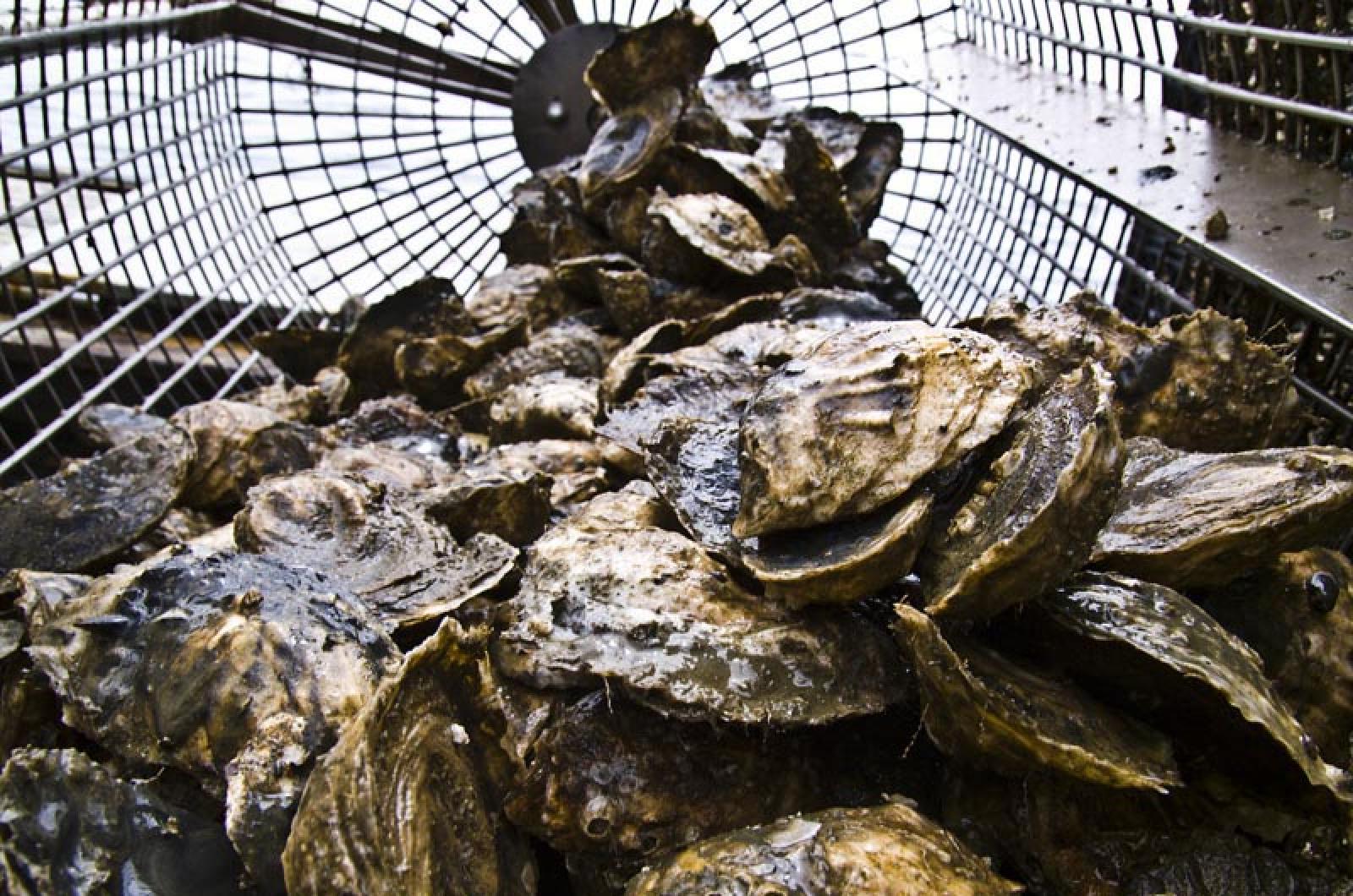The precautionary closure by the state of twelve oyster farms in Katama Bay this week is less cause for alarm and more continuing education in the relatively nascent world of aquaculture on the Vineyard.
On Wednesday all Katama oyster farms were shut down for seven days by state public health and fisheries officials who regulate and monitor the shellfish farms. The immediate reason was three confirmed cases of Vibrio parahaemolyticus linked to consumption of raw oysters that came from Katama.
Vibrio, also called Vp, is a bacterial pathogen that naturally occurs in warm coastal waters. Consuming the pathogen in rawshellfish can cause acute gastrointestinal illness; the illness is rarely fatal but can be severe in people with compromised immune systems. Three or more confirmed cases of vibrio from a pond require an automatic closure.
In announcing the closure this week state public health officials noted that current water temperatures in Katama Bay mirror the conditions in 2013 and 2014 when there was an increase in reported cases of vibrio. Coinciding with a growing aquaculture movement throughout southeastern New England, knowledge and awareness about vibrio is also growing. Increased oyster consumption and also warming water temperatures are believed to be factors in the rise in the number of reported cases.
Regulations vary from state to state, but in Massachusetts, where shellfish is the second most regulated food (the first is milk), a statewide vibrio control plan has been in effect since 2013. Strict protocols for handling farmed oysters include detailed rules for icing, and a tagging system tracks oysters from bay to table.
By most accounts, Vineyard oyster farmers have been exemplary in following these protocols. And well they should be; their livelihood and business reputation depend on it. There’s no question that oyster lovers on the Vineyard and beyond have been safely savoring the high quality, briny-sweet farmed shellfish that have been coming out of Katama Bay and other Island ponds in recent years.
The closure in Katama this week was the first one in the commonwealth this year. It is not yet known whether the reported cases of vibrio were due to improper handling at some point along the chain, but as a precaution in the short term, commercial harvesting and possession of oysters from the bay will be prohibited. All would no doubt agree that’s a small price to pay in the interest of safety.
Meanwhile, for Island oyster farmers discussion and work remains ongoing about how best to manage their crops for safe human consumption during the warmest weeks of summer. At a meeting held in January 2014 on the Vineyard among growers, shellfish biologists and leaders from state health and fisheries agencies, there was general agreement that the goal is to avoid state-mandated closures. How best to accomplish that goal is less clear.
At one point it was suggested that growers consider voluntary closures for a short period in late summer when water temperatures are at their warmest. To be sure, this would mean some loss of business for the oyster farmers, but with a third straight year of closures now due to vibrio, it seems worth revisiting that conversation.




Comments
Comment policy »